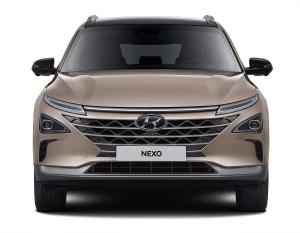This year’s production will more than double than last year… In spite of increased production, unrest in the production of production workers is increasing

Hyundai Motor’s hydrogen electric vehicle Nexo (pictured) recorded sales of more than 30% from the beginning of the year, an increase of more than last year, predicting a smooth growth this year. Hyundai Motor Company plans to double the production of Nexo this year compared to last year.
According to Hyundai Motor’s earnings data on the 7th, Nexo sold 710 units in Korea in January and February this year, up 35.5% from the same period last year.
Since its launch, the domestic cumulative sales volume exceeded 10,000 units in October last year and reached a total of 11,417 units until last month. Global sales totaled 12,953 units until last January.
In 2018, the first year of its launch, the Nexo sold only 727 units in Korea, but in 2019, it reached 4,194 units, an increase of nearly six times. Last year, it sold 5,786 units, an increase of 38% compared to the previous year.
Nexo is ranked number one in sales among hydrogen electric vehicle models worldwide. According to market research firm H2 Research, the global sales volume of Nexo last year was 6,781 units, which was overwhelmingly higher than Toyota Mirai (1,960 units) and Honda Clarity (263 units).
With the release of a partially modified model that improved safety and convenience while lowering the price in January, Nexo is expected to maintain continuous sales growth this year.
Accordingly, Hyundai Motor Company decided to expand Nexo’s production from 6,459 units last year to 17,000 units, more than double this year.
Last year, Hyundai Motor Company also increased production of Nexo from 400 units per month in the first half to 800 units per month in the second half. More than 1,000 units per month are expected to be produced this year.
Meanwhile, it is known that Hyundai Motor Company is also examining the possibility of increasing production internally for the first exclusive electric car’Ioniq 5’that was unveiled last month. Ionic 5 set a new record of 23,000 units on the first day of the pre-contract, and contracts about 35,000 units within a week, and has already exceeded the domestic sales target this year.
However, despite the popularity of eco-friendly cars and the increase in production, production workers are not laughing. Unlike internal combustion locomotives, electric vehicles do not require parts such as engines or transmissions, which may lead to employment reduction.
Lee Hang-gu, a research fellow at the Korea Automobile Research Institute, said, “Electric vehicles contain 28% less parts than existing internal combustion locomotives.”
It is for this reason that Hyundai Motor’s labor and management recently showed a difference in the number of people (Man Hour) in the production line of Ionic 5.
Ioniq 5, which applies E-GMP, a platform exclusively for electric vehicles, has fewer exhaust lines and wires than the powertrain of an internal combustion locomotive, reducing the number of personnel.
In addition, it is known that the number of production units per hour in Ulsan Plant 1 will decrease by installing a dedicated electric vehicle line, reducing the number of manpower input by 30% compared to the previous one.
As the anxiety over employment grew, the production workers of the three domestic automakers recently urged for employment stabilization measures.
On the 3rd, the Hyundai Motors Branch of the National Metal Workers’ Union, the Kia Branch, and the GM Korea Branch held a joint press conference in front of the Yeouido Parliament Building and demanded that the retirement age be extended to 65 in connection with the National Pension Plan. Reporter Kim Ji-eun
Copyright holder © Ulsan Jeilbo Unauthorized reproduction and redistribution prohibited
